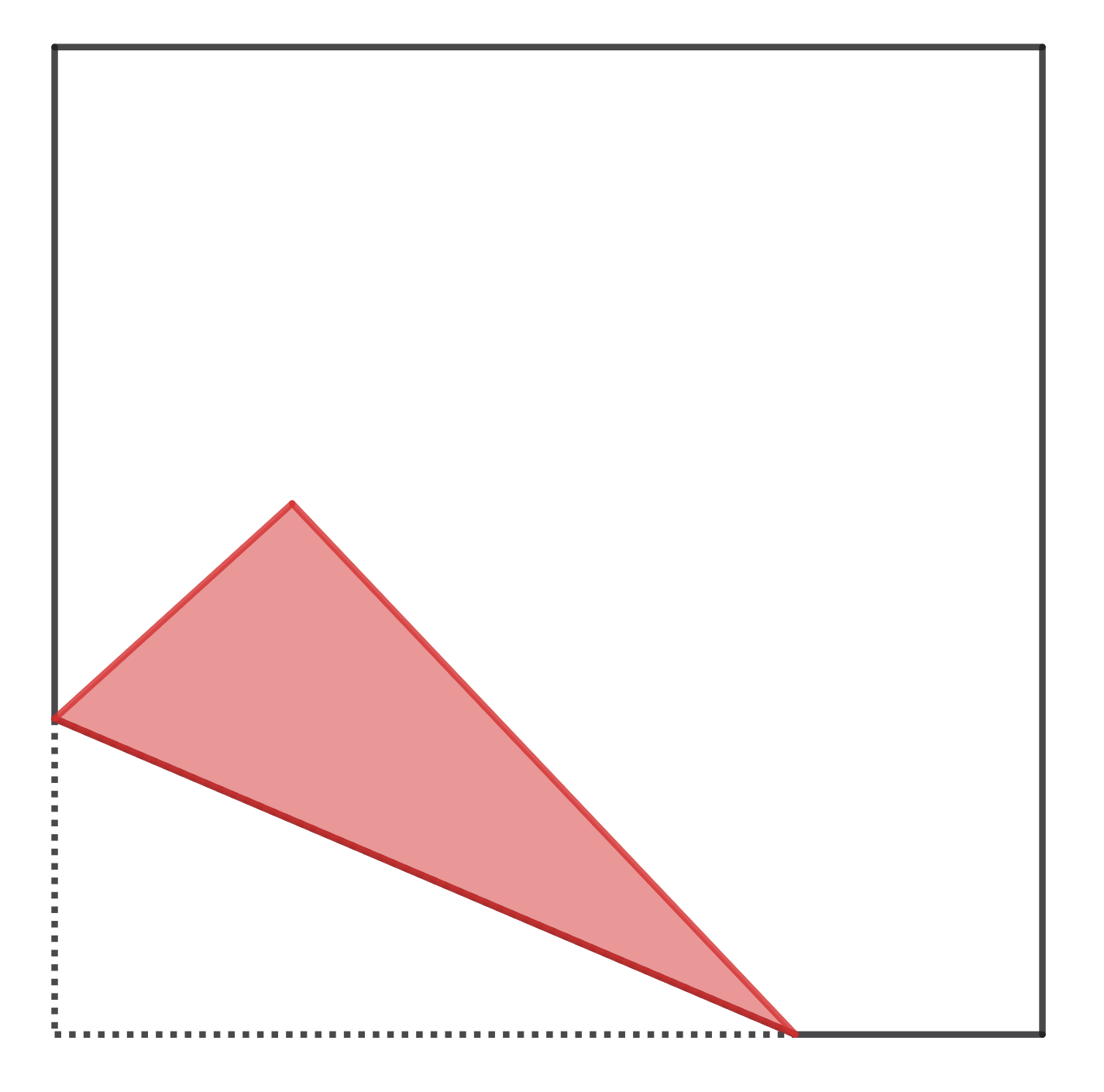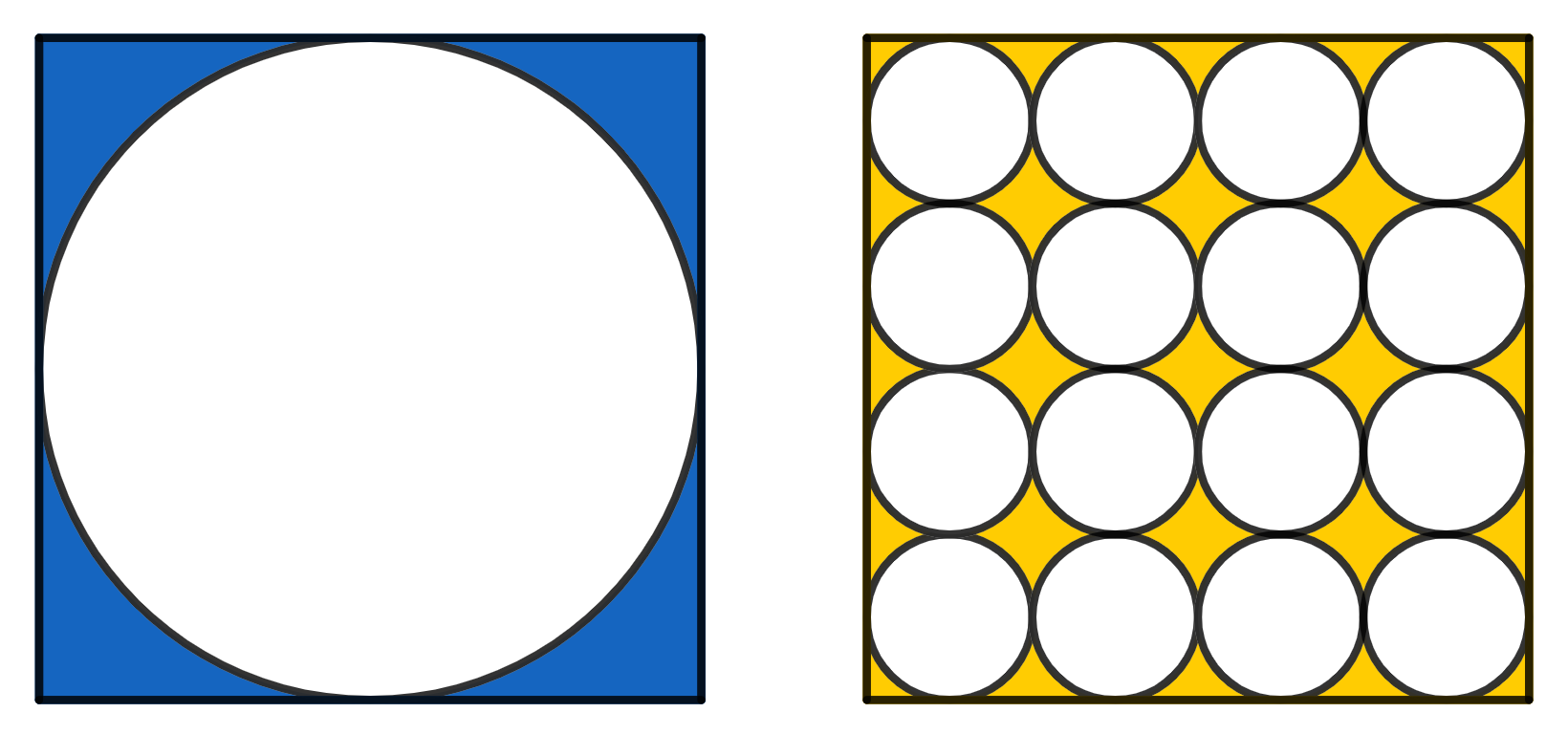Problems
A maths teacher draws a number of circles on a piece of paper. When she shows this piece of paper to the young mathematician, he claims he can see only five circles. The maths teacher agrees. But when she shows the same piece of paper to another young mathematician, he says that there are exactly eight circles. The teacher confirms that this answer is also correct. How is that possible and how many circles did she originally draw on that piece of paper?
On the left there is a circle inscribed in a square of side 1. On the right there are 16 smaller, identical circles, which all together fit inside a square of side 1. Which area is greater, the yellow or the blue one?
What is the ratio between the red and blue area? All shapes are semicircles.
A circle was inscribed in a square, and another square was inscribed in the circle. Which area is larger, the blue or the orange one?
The upper side of a piece of square paper is white, and the lower one is red. In the square, a point F is randomly chosen. Then the square is bent so that one randomly selected vertex overlaps the point F. Find the mathematical expectation of the number of sides of the red polygon that appears.

On weekdays, the Scattered Scientist goes to work along the circle line on the London Underground from Cannon Street station to Edgware Road station, and in the evening he goes back (see the diagram).
Entering the station, the Scientist sits down on the first train that arrives. It is known that in both directions the trains run at approximately equal intervals, and along the northern route (via Farringdon) the train goes from Cannon Street to Edgware Road or back in 17 minutes, and along the southern route (via St James Park) – 11 minutes. According to an old habit, the scientist always calculates everything. Once he calculated that, from many years of observation:
– the train going counter-clockwise, comes to Edgware Road on average 1 minute 15 seconds after the train going clockwise arrives. The same is true for Cannon Street.
– on a trip from home to work the Scientist spends an average of 1 minute less time than a trip home from work.
Find the mathematical expectation of the interval between trains going in one direction.
On the left there is a circle inscribed in a square of side 1. On the right there are 16 smaller, identical circles, which all together fit inside a square of side 1. Which area is greater, the yellow or the blue one?
